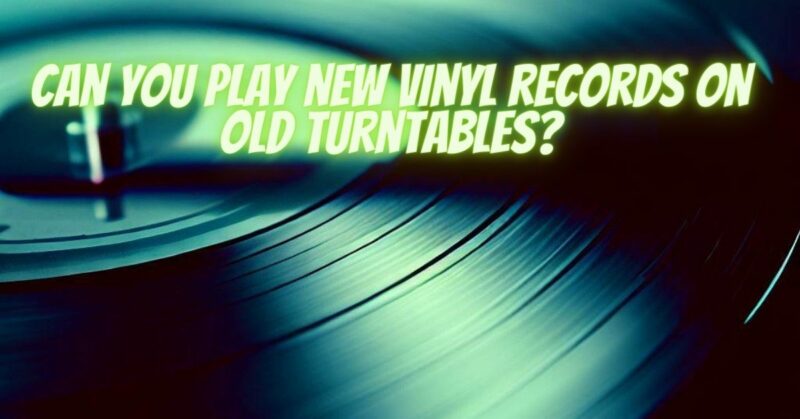Vinyl records, with their unmistakable warm sound and tactile charm, continue to captivate music enthusiasts across generations. For those who possess cherished vintage turntables, the question arises: can you play modern vinyl records on these older pieces of equipment? This article explores the compatibility of new vinyl records with old turntables, considering the technical aspects, potential challenges, and tips for achieving a harmonious listening experience.
The Marriage of Eras: Vinyl Records and Turntables
Vinyl records have experienced a remarkable resurgence in recent years, coexisting with both vintage and contemporary turntables. The compatibility between new vinyl records and old turntables hinges on several key factors that influence sound quality and performance.
Turntable Technology: The Old Meets the New
Vintage turntables often possess unique features and construction that set them apart from their modern counterparts. While these old turntables were built to accommodate the vinyl records of their time, they can still be adapted to play newer records with varying degrees of success.
Consider the Cartridge and Stylus
One of the critical components affecting the compatibility between new vinyl records and old turntables is the cartridge and stylus. The stylus type, shape, and tracking force are crucial factors that determine whether the turntable can effectively navigate the grooves of modern records. Some older turntables might have limitations when it comes to tracking force adjustment or compatibility with different stylus profiles.
Groove Variations and Pressing Quality
Modern vinyl records are often pressed with narrower grooves and higher fidelity compared to records of the past. While most vintage turntables can handle these changes, some might struggle with maintaining consistent tracking across the entirety of the record. In cases of records with exceptionally tight grooves or unconventional mastering techniques, compatibility issues could arise.
Adjustment and Maintenance
Before playing new vinyl records on an old turntable, it’s advisable to ensure that the equipment is properly calibrated and maintained. This includes checking the turntable’s speed accuracy, tonearm balance, and anti-skate settings. Regular maintenance, such as cleaning the stylus and ensuring that the turntable’s components are in good condition, can significantly impact the overall playback quality.
Enhancing Compatibility
To bridge the gap between new vinyl records and vintage turntables, consider the following steps:
- Stylus Upgrade: If your turntable’s stylus is outdated or not suited for modern records, upgrading to a compatible stylus can improve tracking and sound quality.
- Counterweight Adjustment: Ensure that the tonearm’s counterweight and tracking force are properly adjusted to match the requirements of your chosen records.
- Anti-Skate Calibration: Proper anti-skate calibration helps prevent the stylus from applying excessive lateral force to the groove walls, leading to more accurate playback.
- Use High-Quality Cartridges: If possible, invest in a high-quality cartridge that offers flexibility and compatibility with various stylus profiles.
Playing new vinyl records on old turntables is indeed possible, though it requires attention to technical details and adjustments. Vintage turntables can deliver a nostalgic and authentic vinyl experience, but adapting them to the demands of modern records might involve some trial and error. By carefully considering cartridge compatibility, maintaining the equipment, and making necessary adjustments, enthusiasts can achieve a harmonious synergy between eras, uniting the magic of vinyl’s past with the sonic joys of the present.

